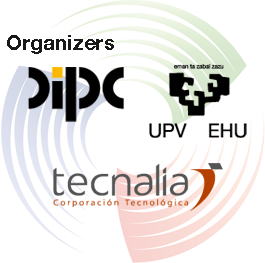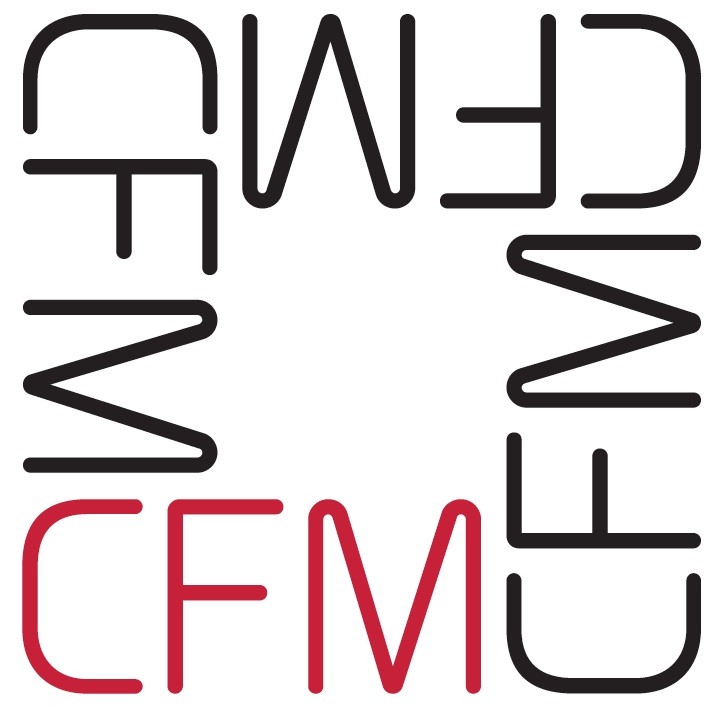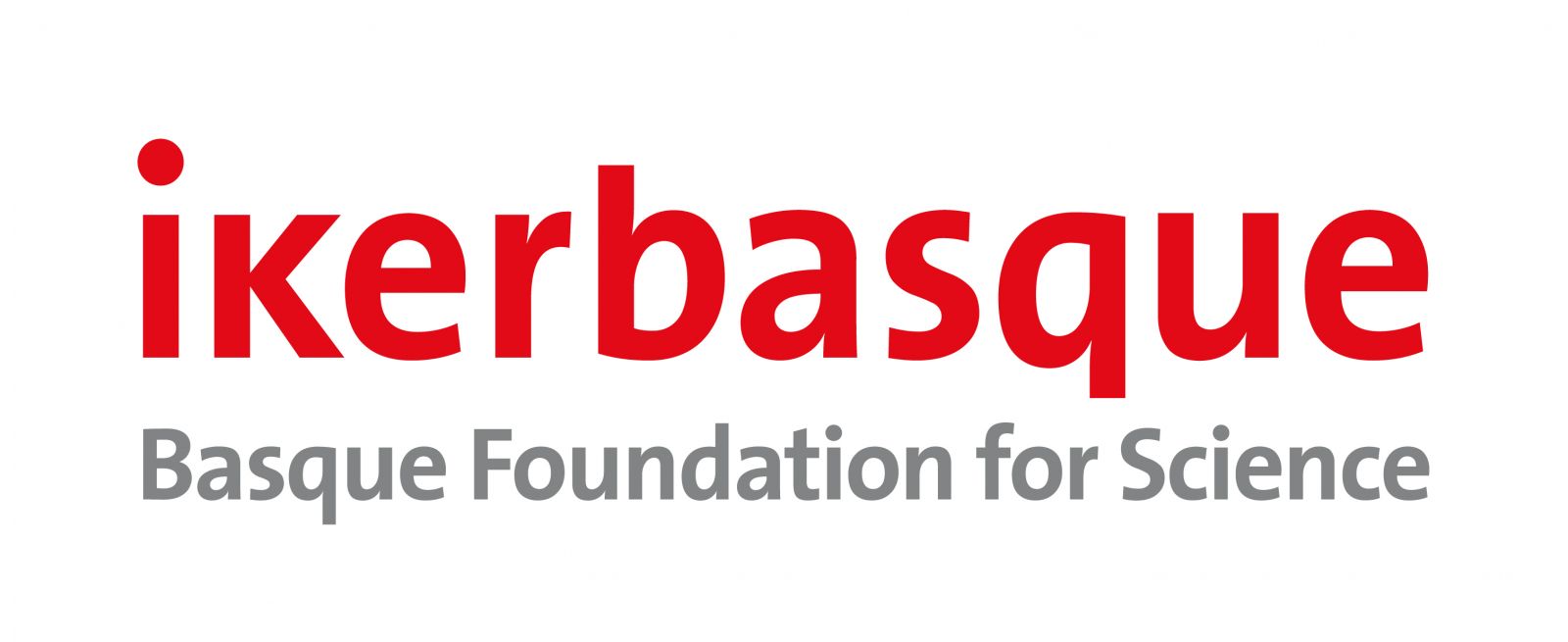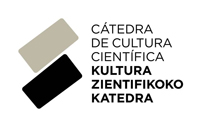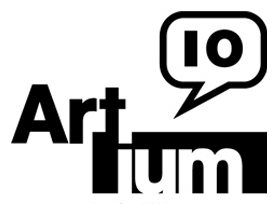Invited speakers
 |
Dame Jocelyn
Talks: + Public Lectures | Tuesday, Oct. 1 | Bizkaia Aretoa | Public | + Public Lectures | Wednesday, Oct. 2 | Victoria Eugenia Theater | Public |
|
||
|
A British astrophysicist. She graduated from the University of Glasgow with a BSc degree in Natural Philosophy (Physics) in 1965, and obtained her PhD from the University of Cambridge in 1969. As a postgraduate student at Cambridge, she discovered the first radio pulsars with her thesis supervisor Antony Hewish; for this Hewish shared the Nobel Prize in Physics with Sir Martin Ryle. After finishing her PhD, Bell Burnell worked at several universities and institutions in Britain, and was also a visiting professor at Princeton University in the United States. She was Dean of Science at the University of Bath (2001-04), and President of the Royal Astronomical Society from 2002-2004. President of the Institute of Physics (2008-2010), she is currently a Visiting Professor of Astrophysics at the University of Oxford and a Fellow of Mansfield College.
Although Bell was not included as a co-recipient of the Nobel Prize, which stoked some controversy at the time, she has been honoured by many organizations. Among other awards, she received the Albert A. Michelson Medal of the Franklin Institute of Philadelphia in 1973, the Herschel Medal of the British Royal Astronomical Society in 1989 and the Magellanic Premium of the American Philosophical Society in 2000. She has been awarded several honorary degrees too. Fellow of the Royal Society in 2003, she was made a Dame Commander of the Order of the British Empire in 2007.
|
|||
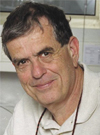 |
Aaron + Public Lectures | Tuesday, Oct. 1 | Victoria Eugenia Theater | Public | + Encounters | Wednesday, Oct. 2 | Artium | Aimed at students |
|
||
|
He was born in Haifa, Israel. He is a Distinguished Research Professor at the Technion - Israel Institute of Technology in Haifa. He received his M.Sc. (1971) and M.D. (1975) from the Hebrew University in Jerusalem, and his D.Sc. (1982) from the Technion. There, as a graduate student with Dr. Avram Hershko and in collaboration with Dr. Irwin A. Rose from the Fox Chase Cancer Center in Philadelphia, USA, they discovered that the covalent attachment of ubiquitin to a target protein signals it for degradation.
They deciphered the mechanism of conjugation, described the general proteolytic functions of the system, and proposed a model according to which this modification serves as a recognition signal for a specific downstream protease. As a postdoctoral fellow with Dr. Harvey Lodish at the MIT, he continued his studies on the ubiquitin system and made additional important discoveries. Over the years it has become clear that ubiquitin-mediated proteolysis plays major roles in numerous cellular processes, and aberrations in the system underlie the pathogenetic mechanisms of many diseases, among them certain malignancies and neurodegenerative disorders. Consequently, the system has become an important platform for drug development.
Among the numerous prizes Ciechanover received are the 2000 Albert Lasker Award, the 2003 Israel Prize, and the 2004 Nobel Prize (Chemistry; shared with Drs. Hershko and Rose). Among many distinguished academies, Ciechanover is a member of the Israeli National Academy of Sciences and Humanities, the Pontifical Academy of Sciences of the Vatican, the American Academy of Arts and Sciences (Foreign Fellow), the National Academy of Sciences of the USA (Foreign Associate), and the Institute of Medicine of the National Academy of Sciences of the USA (Foreign Associate).
|
|||
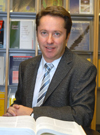 |
Juan Ignacio
+ Encounters | Monday, Sept. 30 | Eureka! | Aimed at students | + Public Lectures | Monday, Sept. 30 | Victoria Eugenia Theater | Public |
|
||
|
As an expert in quantum computation and its application in the field of information, the focus of his research work is the quantum theory of information. His theories propose that quantum computers will bring a new revolution to the field of information, as this will lead to more efficient communication and far greater security in both data processing and bank transfers.
|
|||
 |
Claude
Talks: + Public Lectures | Wednesday, Oct. 2 | Victoria Eugenia Theater | Public | |
||
|
|
|||
|
In 1973, he was appointed as Professor of atomic and molecular physics at the Collège de France in Paris, a position that he held for many years. His teaching experience led him to publish several textbooks, which are well appreciated by undergraduate and graduate physics students.
He pioneered the research into the various mechanisms that can be used to slow down, cool and trap atoms with a laser beam. Cohen-Tannoudji and his team were among the first to cool atoms to very low temperatures, lower than one millionth of a degree above absolute zero. The techniques designed by Cohen-Tannoudji and other scientists have resulted in various specific applications, such as more accurate atomic clocks and more precise atomic interferometers and gyrometers to measure the force of gravity and rotation speed. These techniques have been also essential for producing new states of matter like Bose Einstein condensates. He received, with Steven Chu and William Phillips, the 1997 Nobel Prize in Physics for the development of methods to cool and trap atoms with laser light.
|
|||
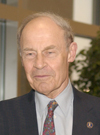 |
Dudley
+ Public Lectures | Monday, Sept. 30 | Victoria Eugenia Theater | Public | |
||
|
Born in San Jose (California). He received his B.S. degree in Mathematics (1954) and M.S. in Chemistry (1955) at Stanford University, followed by an A.M. degree in Physics (1956) and Ph.D. in Chemical Physics (1958) at Harvard University. He started lecturing in physics and chemistry at Berkeley University in 1958. In 1963 he returned to Harvard as Professor of Chemistry where he became Baird Professor of Science (1976-2003). He is now a Research Professor (Emeritus) at Harvard University. He also joined the Texas University faculty in 2005 as a part-time Professor of Physics.
|
|||
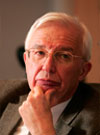 |
Jean-Marie + Public Lectures | Thursday, Oct. 3 | Victoria Eugenia Theater | Public |
|
||
|
Born in Rosheim, France. He studied chemistry at the University of Strasbourg, where he gained his PhD in 1963. Following his post doctorate studies, he spent a year at Harvard University working with Professor Robert Burns Woodward on the chemical synthesis of vitamin B12. He was appointed Professor of Chemistry at Strasbourg University in 1970, and joined the faculty at the prestigious Collège de France, Paris, in 1980.
He shared the Nobel Prize in Chemistry in 1987 with Pedersen and Cram for his studies on the chemical basis of “molecular recognition” (i.e. the way in which a receptor molecule recognizes and selectively binds a substrate), which also plays a fundamental role in biological processes.
Lehn is a member of many academies and institutions and has received numerous international honours and awards.
|
|||
 |
Amand
+ Public Lectures | Friday, Oct. 4 | Victoria Eugenia Theater | Public |
|
||
|
Amand Lucas obtained his PhD in Physics in 1966 from the University of Liège, Belgium. He held a research appointment from the Belgian National Science Foundation during the period from 1962 to 1974. In 1967 and 1968 he did Postdoctoral Research at the Battelle Memorial Institute in Columbus, Ohio, USA. In 1970 he was visiting scientist at the ICTP (International Centre for Theoretical. Physics) in Trieste, Italy. From 1970 to 1972, he worked at ESTEC (European Space Research and Technology Centre) in Noordwijk, Holland. In 1974, he was appointed Professor of Physics at the University of Namur where he worked until his retirement in 2002. During this tenure he took two sabbatical leaves first at IBM Research Center in Yorktown, N.Y. in 1977-78 and then at IBM Almaden, CA in 1986-87. As a theoretical physicist, Amand Lucas has worked in the field of Condensed Matter Physics, focussing on Surface Physics. In 1985, he was awarded the Belgian Francqui Prize in Exact Sciences for his works in these areas. In 2001 he obtained the Wernaers Prize for his innovative teaching on the structural biology of DNA. He is a Fellow of the American Physical Society since 1983. He is a member of the Académie Royale des Sciences, des Lettres et des Beaux Arts de Belgique and of the Academia Europaea.
Amand Lucas is the author of several hundred research papers, books and monographs.
|
|||
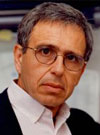 |
Ginés
+ Public Lectures | Friday, Oct. 4 | Victoria Eugenia Theater | Public |
|
||
|
Ginés Morata graduated from the Complutense University of Madrid with a degree in Biology, before going on to earn his PhD in 1973. He is currently a research professor at the Severo Ochoa Centre for Molecular Biology, which is jointly run by Spain’s Higher Council for Scientific Research (CSIC) and the Autonomous University of Madrid (UAM). He was director of this centre from 1990-1991. Professor Morata specialises in development genetics, focusing particularly on the study of the biological architecture of the Drosophila melanogaster fly. The genetic study of this fly (commonly known as the fruit fly) enables us to learn more about the biology of human development and will hopefully, in the future, lead to further discoveries regarding the cellular processes involved in organ regeneration. These breakthroughs may help develop new treatments for cancer and could even lead to the discovery of anti-aging techniques for humans.
Prof. Morata has conducted his research in a number of different institutions, including both Oxford and Cambridge Universities in the UK, the University of California in the US and various centres in France and Switzerland. He has received numerous awards, including the Santiago Ramón y Cajal National Research Award in 2002, the Gold Medal of Andalusia in 2003, the Mexican Award for Science and Technology in 2004 and the Prince of Asturias Award for Scientific and Technical Research in 2007.
|
|||
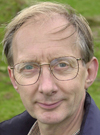 |
Sir John + Public Lectures | Thursday, Oct. 3 | Victoria Eugenia Theater | Public | |
||
|
Born in England. He has been working at the Blackett Laboratory, Imperial College London (UK) since 1981.
He began his career in the Cavendish Laboratory at the University of Cambridge, followed by six years at the Daresbury Laboratory of the Science and Technology Facilities Council (UK), where he headed the theory group. In collaboration with the Marconi Company, he designed a series of completely novel artificial materials, or “metamaterials”, with properties not found in nature. Successively metamaterials with negative electrical permittivity, then with negative magnetic permeability were designed and constructed This project culminated in the proposal for a 'perfect lens' whose resolution is unlimited by wavelength. He is popularly known for his research into refractive indexes and creation of the first practical "Invisibility Cloak".
John Pendry was head of the physics department at Imperial College London and principal of the Faculty of Physical Sciences. The long list of awards he has received includes, among others, his post as fellow of the Royal Society (1984), honorary fellow of Downing College at Cambridge University, the Dirac prize (1996), the Royal Medal of the Royal Society (2006), as well as being knighted for his services to science (2004).
|
|||
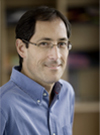 |
José María
Talks: + Public Lectures | Wednesday, Oct. 2 | Victoria Eugenia Theater | Public | |
||
|
Prof. José María Pitarke is the director of CIC nanoGUNE since its creation in 2006. He studied Physics at the University of the Basque Country, where he received his PhD degree with distinction in 1990. During his PhD work, he investigated some aspects of tunneling spectroscopy and electron and photon emission in solids. After a postdoctoral stay at the Oak Ridge National Laboratory (USA), he obtained, in 1993, a tenured position at the University of the Basque Country (UPV/EHU). He combined his work at the UPV/EHU with sabbatical semesters at various US Universities and Imperial College of London (UK). Since 2000, he has been full professor of condensed matter physics at the UPV/EHU. Since 2005, he has been By-Fellow of the Churchill College of the University of Cambridge. His research interests include condensed matter theory, and many-electron interactions in solids, surfaces, and nanostructures.
In February 2013, he also became the president of the Elhuyar Foundation for the popularization of science and technology.
|
|||
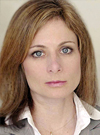 |
Lisa Harvard University, USA
Talks:
|
||
|
Professor Randall earned her PhD from Harvard University and held professorships at MIT and Princeton University before returning to Harvard in 2001. She studies theoretical particle physics and cosmology at Harvard. Her research connects theoretical insights to puzzles in our current understanding of the properties and interactions of matter. She has developed and studied a wide variety of models to address these questions, the most prominent involving extra dimensions of space.
Randall’s studies have made her among the most cited and influential theoretical physicists and she has received numerous awards and honors for her endeavors. She is a member of the National Academy of Sciences, the American Philosophical Society, the American Academy of Arts and Sciences, and Honorary Member of the Royal Irish Academy, among others. In 2003, she received the Premio Caterina Tomassoni e Felice Pietro Chisesi Award, from the University of Rome, La Sapienza, in 2006, the Klopsteg Award from the American Society of Physics Teachers for her lectures and in 2007 the Julius Lilienfeld Prize from the American Physical Society for her work on elementary particle physics and cosmology and for communicating this work to the public. In 2012, she was the recipient of the Andrew Gemant Award from the American Institute of Physics.
Randall has also had a public presence through her writing, lectures, and radio and TV appearances. Randall’s books, Warped Passages: Unraveling the Mysteries of the Universe’s Hidden Dimensions and Knocking on Heaven’s Door: How Physics and Scientific Thinking Illuminate the Universe and the Modern World were both on the New York Times’ list of 100 Notable Books of the Year. Higgs Discovery: The Power of Empty Space was released in 2012. Randall has also pursued art-science connections, writing a libretto for an opera. |
|||
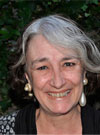 |
Arantxa
Talks: + Public Lectures | Thursday, Oct. 3 | Victoria Eugenia Theater | Public | |
||
|
Born in Donostia-San Sebastian, Arantxa Urretabizkaia is a member of the Basque Language Academy – Euskaltzaindia and one of the most prominent figures in the field of contemporary Basque literature. The start of her career coincided with the resurgence of Basque culture during the 1960s and 1970s, and indeed she was a member of the Argia group and the publishing house Lur. She has a degree in History and since 1977 has worked as a journalist in many different media organisations, including both the written press (Egin, Deia, El Mundo and El Diario Vasco) and radio and television (Euskal Irrati Telebista).
As a poet she debuted with a long poem entitled San Pedro bezperaren ondokoak, published in 1972. Some years later she published a book of poems called Maitasunaren magalean, and received the National Critics’ Award in 1982. In the world of prose, she is best known for her novel Zergatik Panpox? (1979) and her latest work, 3 Mariak (2010), also won the Critics’ Award. Part of her work has been translated into Spanish and other languages.
She has worked as a film scriptwriter and has sat on the judges’ panel in several literary competitions, including the Basque Awards. She is also a member of the judges’ panel of the Donostia-San Sebastian International Film Festival, in the New Directors Award section.
|
|||
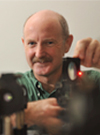 |
Rafael YUSTE
+ Encounters | Wednesday, Oct. 2 | Artium | Aimed at students | |
||
|
He pioneered the launching of the Brain Activity Map Project, a large-scale international effort to record and manipulate the activity of every neuron in brain circuits. This project has recently been sponsored by the Obama administration as the BRAIN initiative.
Rafael Yuste is Professor of Biological Sciences and Neuroscience at Columbia University. He was born and educated in Madrid, where he obtained his MD at the Universidad Autónoma in the Fundación Jimenez Diaz Hospital. After a brief research period in Sydney Brenner's group at the LMB in Cambridge, UK, he did Ph.D. studies with Larry Katz in Torsten Wiesel’s laboratory at Rockefeller University in New York. He then moved to Bell Labs, where he spent four years as a postdoctoral student of David Tank and Winfried Denk in the Department of Biological Computation, within the Physics Division. In 1996 he joined the Department of Biological Sciences at Columbia University. In 2005 he became HHMI Investigator and co-director of the Kavli Institute for Brain Circuits at Columbia.
Dr. Yuste and his laboratory are pursuing a "reverse engineering" strategy to understand the function of the cortical microcircuit, a basic element of cortex architecture. To study these questions, Yuste has pioneered the development and application of laser imaging techniques, such as calcium imaging of neuronal circuits, two-photon imaging and photostimulation using caged compounds and holographic spatial light modulation microscopy. These technical developments have resulted in several patents, two of which are commercially licensed.
Yuste has obtained many awards for his work, including that of New York City Mayor and the Society for Neuroscience's Young Investigator Awards. |
|||
News Bulletin
Enter your e-mail address to get updates of the conference
Last minute news
.................................................
Lectures videos at DIPC.TV
More information
.................................................
.................................................
Like us, find us,
follow us
![]()
![]()
![]()
![]()
.................................................
Get talking ...
![]() Tweets sobre "@DIPCehu OR @euskampus OR #quantum13"
Tweets sobre "@DIPCehu OR @euskampus OR #quantum13"
@DIPCehu | @euskampus
#quantum13
.................................................
Passion for Knowledge - Quantum 13
September 30 - October 6
Basque Country, Spain ![]()
Organized by:
DIPC within the framework of euskampus
Technical Secretariat
Lankor - Conferences and Events
Parque Empresarial Zuatzu, Edif. Zurriola planta baja local 5
20018 Donostia - San Sebastián
Tel: +34 943 42 81 11 E-mail: larraitz@lankor.com
Fax: +34 943 42 80 55 Web: www.lankor.com
Multiplatform
Web adapted to smarthphone and tablet.
Esta obra está bajo una Licencia Creative Commons Atribución-NoComercial-CompartirIgual 3.0 España 


